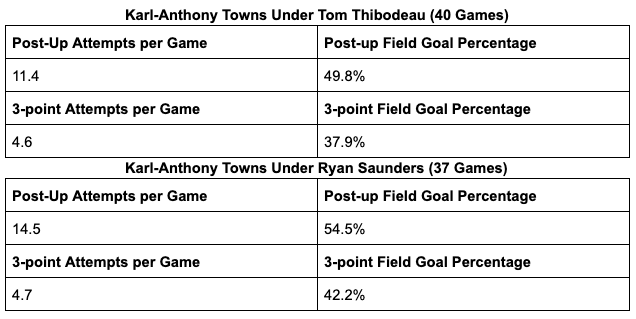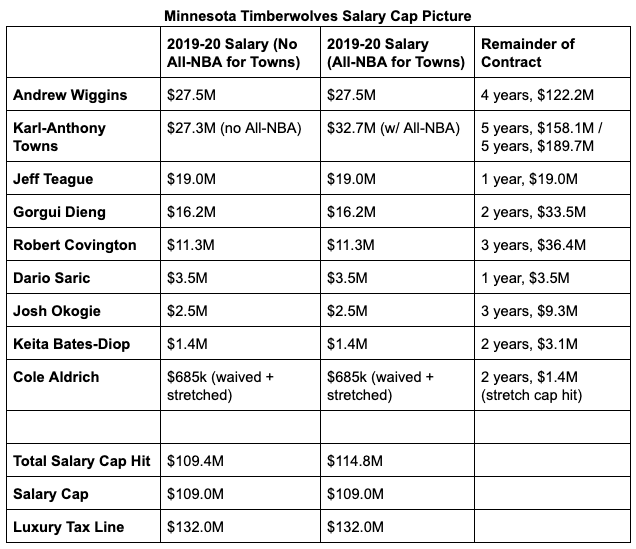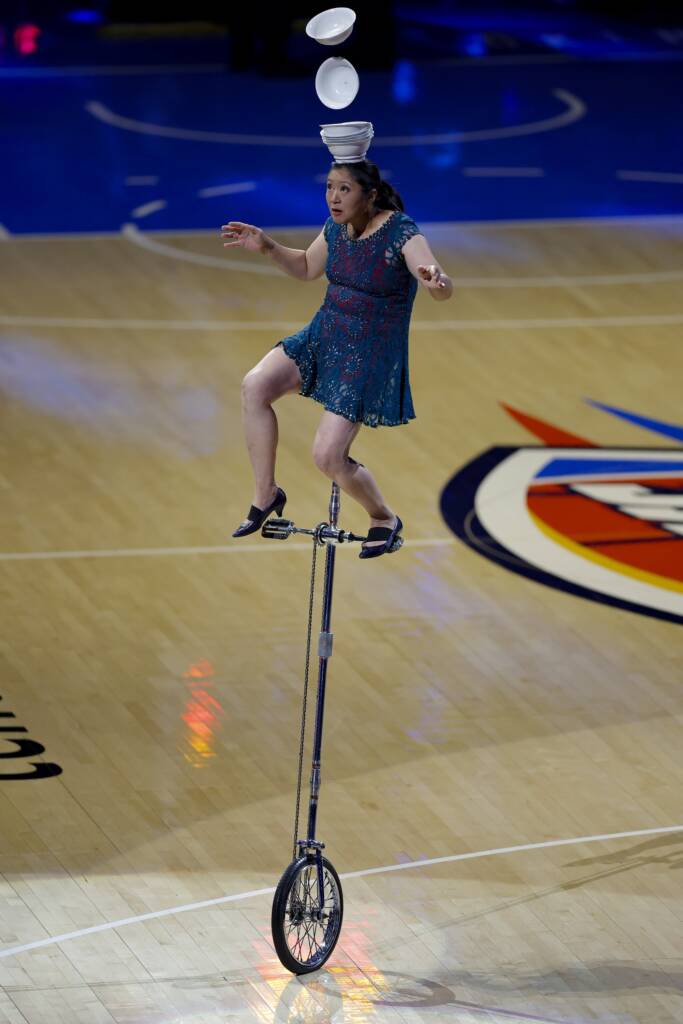When Daryl Morey was hired by the Houston Rockets in 2006, he inherited a 26-year-old Gersson Rosas onto his basketball operations staff. Rosas had already worked in the Rockets organization for three years as both a video coordinator and personnel scout prior to then-Rockets owner Leslie Alexander hiring Morey, and his analytic-driven reputation, away from the Boston Celtics organization.
Alexander’s idea was that Morey would differentiate himself from Houston’s previous general manager, Carroll Dawson, a former coach turned front office executive. With the hiring came the assumption that much if not all of Dawson’s staff — which, of course, included Rosas — would be replaced by a legion of Morey nerds.
That didn’t happen.
“Daryl gave me an opportunity when he came in and it changed my career,” said Rosas on Monday afternoon, shortly after a press conference that crowned him the new Morey of the Minnesota Timberwolves franchise. “I’m confident there are individuals like that here in this organization.”
For Rosas, it feels as if the opportunity he received from Morey has enlightened him to the idea that exponential organizational growth comes from developing what you already have.
“I continually work inside-out. I want to know what’s here — strengths and weaknesses — and then address it,” Rosas continued. “I’ve been through that, I’ve lived it, I’ve benefited from it.”
Through Rosas’ track record with Morey and his commentary Monday, the safe assumption has become that the new POBO will give everything that is already under contract in Minnesota a fair shake. Each question mark will be examined with eyes on empowerment if Rosas sees a practical alignment to his vision.
In Minnesota, that connects most to the coaching staff (namely, Ryan Saunders), the front office (namely, Scott Layden) and the current roster pieces (namely, Andrew Wiggins). Rosas touched on all three tentacles in an extensive interview with members of the media following his press conference Monday afternoon.
Investing in Andrew Wiggins in “Every Possible Way”
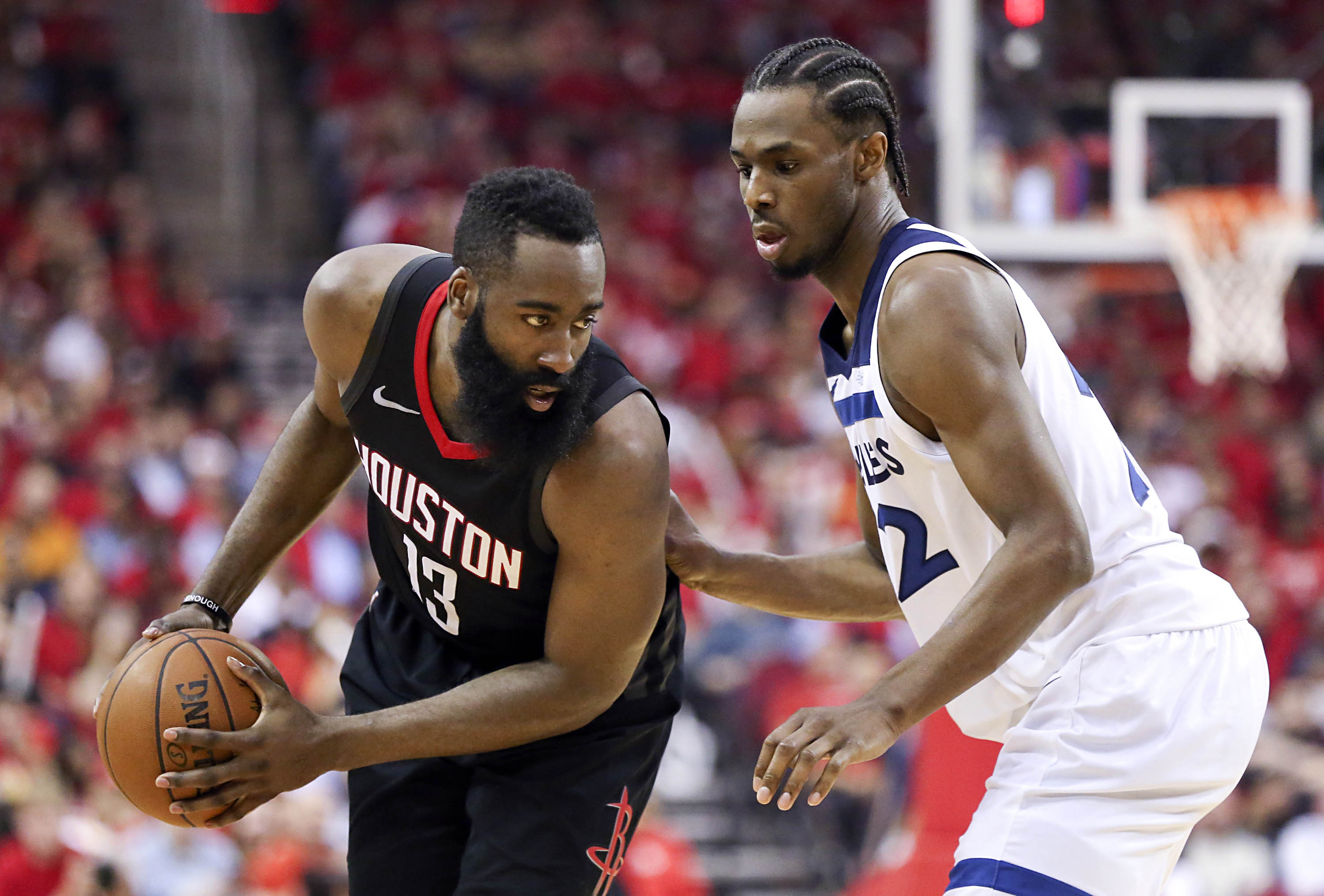
Blinding fatigue surrounding Wiggins has seeped into every pore of the Minnesota Timberwolves fanbase. But that perception — right or wrong — has never been echoed by the league at-large. Wiggins Island may be desolate in Minnesota, but Rosas isn’t from Minnesota.
“The reality is this: If I go out on the market to get a player, I’m not going to find a player that’s got a bigger upside than Andrew,” said Rosas. “He’s a very talented individual, he’s got a ton of physical tools, and he’s a great kid. We have to mature him into a great player, and that’s our responsibility. We have to do everything possible from a front office side, from a coaching side, from player development, to help him be the best player he can be.”
There’s no way Rosas is naive to the idea that Wiggins has been statistically detrimental to the Wolves for much of his career. Particularly last season — when Wiggins became the first NBA player since 2015-16 to attempt more than 16 field goals per game and finish with a true-shooting percentage lower than 50 percent. Wiggins’ lack of impact would have been impossible for Rosas to miss; prior to Wiggins doing so this season, only two players in NBA history (Desmond Mason and Antoine Walker) had played over 2,500 minutes in a season and tallied less than one win share, a catch-all metric that measures a player’s impact on winning. Rosas, with his scouting background, is obviously well aware that it has typically been advantageous for an opponent to allow Wiggins to take shots. This past season, Wiggins’ fifth season in the league, included 1,209 shot attempts that only led to 1,321 points scored — making Wiggins the first player since Josh Smith in 2013-14 to attempt 1,200 shots and not score over 1,400 points.
“To be fair to Andrew, it’s a process. It doesn’t happen overnight,” said Rosas, who is understandably choosing to recognize the opportunity to find efficiencies in Wiggins’ game more than dwelling on the prevailing ineffectiveness. “There have been different coaches, there have been different systems, there have been different platforms. The only thing that I can go off is the experiences that I have with Andrew.”
Rosas support of Wiggins makes sense when parsed. The upside he describes is undeniable — because you can always go higher than the floor. But further, what other option does Rosas have? Wiggins has four years and $122.2 million remaining on the maximum contract extension Tom Thibodeau inked the then-22-year-old to.
To some, the faith Rosas is putting in Wiggins may be frustrating. But if the franchise is stuck with the player who wildly underproduced his $25.5 million salary last season, what better strategy is there then to invest in the growth of an unmovable asset?
The other option is what Thibodeau tried: Bringing other pieces in (Jimmy Butler, Jeff Teague, Taj Gibson, Derrick Rose) who would show him the way. That didn’t work. And with no bullets left in the chamber in the way of cap space or tradeable assets to go out and get another vet, placing a focus on using a player development program — that includes individual work on Wiggins specifically — is the one resource left on the island.
Some may suggest trading Wiggins as a separate path to roster flexibility, but that too is naive. Move Wiggins and the Wolves aren’t granted some sort of magical cap space gift card.
For a hypothetical example, say the Miami Heat hit up Rosas with the idea of swapping difficult contracts: Andrew Wiggins (four years, $122.2 million) for Dion Waiters (two years, $24.8 million), provided the Wolves attach a few future picks as penance. Even in that scenario though, where Waiters is on the books for $15.4 million less than Wiggins, the Wolves would not receive that $15 million in flexibility.
The confusing reason for this lies in Karl-Anthony Towns. If Towns makes one of this season’s All-NBA teams, his new salary grows by $32 million — up to $189.7 million over the next five seasons. That substantial salary uptick from $7.8 million in 2018-19 to $32.7 million next year fills almost every hole in the cap sheet when fused to Jeff Teague’s ($19 million) and Gorgui Dieng’s ($16.2 million) annual salaries. Even if the Wolves swapped out Wiggins for Waiters, they would only have $3.4 million in cap space entering this summer — and that would be before re-signing Jones, Rose, Gibson, Luol Deng, Anthony Tolliver or Jerryd Bayless.
There just aren’t other paths as it pertains to Wiggins, and that’s why Rosas is choosing to focus in on improving a greatly depreciated asset.
“Andrew is a very talented individual,” Rosas continued on Monday. “I was fortunate to have seen him as a young player at the Hoop Summit, and I know what his potential is. I know what his impact could be. I’m going to invest every resource I can to help Andrew be successful. Because the reality is that a player at that level, with that talent, in the right system, playing the right way is something that is very important.”
The biggest resource Rosas has is building Wiggins up, from the inside-out, and invest in coaching him up.
The Best “Top-to-Bottom” Coaching Staff

Ryan Saunders attended Rosas’ press conference Monday, only further resounding the assumption around the team that Saunders will be retained as the head coach. Doing so would place the 32-year-old at the top of Rosas’ player development staff pyramid. The clarity Rosas gave Monday was that the new coaching staff — be it Saunders’ or someone else’s — will function more football-style, with a vision of hyper-focused duties for each coach on the staff. Another departure from the Thibodeau-as-team-czar model.
“No longer is it a one-man operation,” said Rosas. “The way I look at coaching is the whole staff. We have to do a great job of putting the best basketball coaching staff here, top-to-bottom. And a little like a football model, (with) the head coach who runs the program, an offensive coordinator, a defensive coordinator, a player development coordinator, a game plans coordinator.”
It is through these types of moves where players can be broken down in every aspect of their game so as to be built back up into something more. To use Wiggins and Towns as examples again, there are adjustments that can be made to the ways that those players are coached that will allow them to perform on a higher plane.
The most obvious example of this occurring in the Rockets organization was in making schematic adjustments that allowed the team’s three best players — James Harden, Chris Paul and Clint Capela — to take shots from the places that they find their greatest efficiency: at the rim and behind the 3-point line.
In 82 games last season, the Houston Rockets as an entire team attempted 164 total shots from 15-to-19 feet away from the hoop (the deep midrange). Wiggins, despite shooting 58.3 percent at the rim and 33.9 percent from 3-point land, attempted 180 of his field goal attempts from that same 15-to-19 foot range — where he only made 31.7 percent of his shots.
Further, of players who posted up over 500 times this season, Towns had the league’s best field goal percentage in such situations, per NBA.com. The issue was that Towns’ post-up game was not a mainstay of the Wolves’ offensive diet under Thibodeau in the way it became under Saunders. Towns also increased his per game 3-point volume under Saunders, and much like the post-ups, the efficiency did not decrease.
“We want to be strategic, and we want to play to our strengths,” said Rosas who described an alignment between the coaching staff and his department’s vision for the style of play. “You’re going to see a lot of similarities with how the modern game is being played. We were fortunate to do a lot of great things in Houston… in terms of pace and space, in terms of shot selection, how we utilize players, how we put players in positions to be successful.
“We’re going to push the standards of what we’re doing. I’m excited that this roster offers a lot of players that fit into that style of play, and I think that’s going to be one of the biggest reasons we’re able to take a step forward next year.”
For Rosas, it seems critical that he hires a coach — whether that be Saunders or someone on the market — who is receptive to a line of thinking that extends beyond the bench and into the basketball operations department. To Rosas, this may be one of the most attractive tenets of Saunders’ candidacy. After taking over for Thibodeau, Saunders was ultimately in charge on the bench but he did rely heavily on the input of his assistant coaches. Jerry Sichting helped greatly with rotating players from the bench into the game, Larry Greer assisted with in-game strategic adjustments and Saunders leaned greatly on the coaching experience of Ed Pinckney and Malik Allen. Saunders is the anti-Thibodeau: a listener.
“Everybody on our basketball operations is going to be on the same page, and guys are going to be pushed to develop,” said Rosas. “I think that alignment is critical… Player development is a lifeblood.”
The thought is that coaching staff, who has a litany of distracting responsibilities due to the nature of the job, can become greater than the sum of its parts through connectivity to the rest of the basketball operations. Another building from the inside and out into something more.
An “Aggressive” and “Maximizing” Front Office
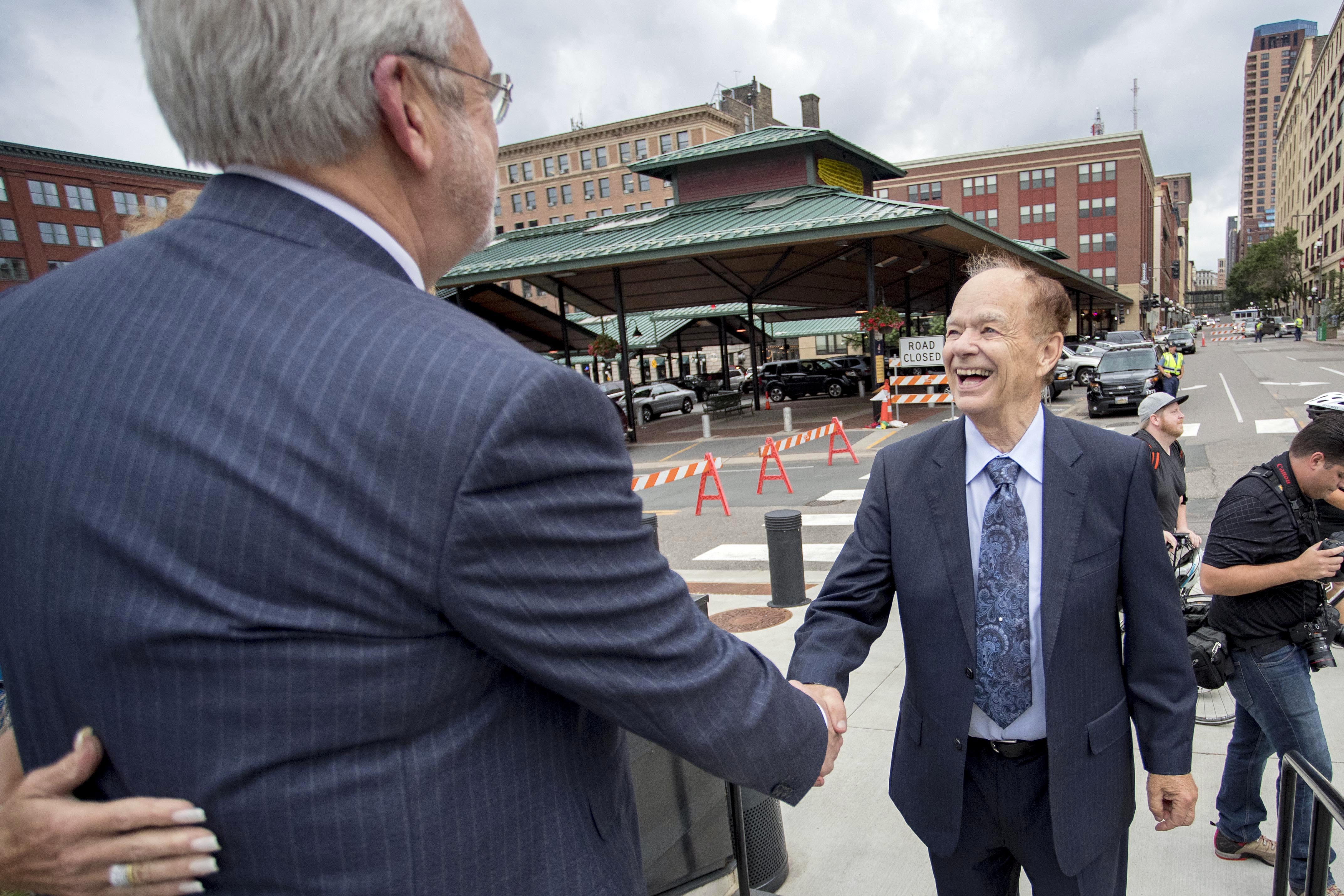
Scott Layden also attended Rosas press conference Monday. Layden, who functionally held Rosas’ position after Thibodeau was fired, has a future with the organization that appears to be less clear. What does appear clear is that Rosas will use Layden and the incumbent front office — all of whom were sitting in the second row at the presser — if they prove they can add to the process. Layden and crew do not need to be sunk costs; they, like Wiggins, can be assets that have already been paid for.
Whether it comes from wringing out institutional knowledge from Layden or from bringing in a staff of his own, it is abundantly clear that Rosas’ front office strategy will be one of aggression. More so than analytics, it is probably in this vein that Rosas aligns most with the hyper-aggressive Morey who — from James Harden to Dwight Howard to Chris Paul — has jumped on seemingly every opportunity possible to acquire stars when they become available in his tenure in Houston. (Remember it was Morey who offered the maximum of four first-round picks for Jimmy Butler earlier this season.)
“In Houston, we were at a certain stage. Here, we’re at a different stage,” said Rosas of potential acquisitions. “But we’re always going to focus on high-end players.”
Rosas spoke of how it didn’t matter two summers ago that Harden and Paul functionally played the same position; the Houston front office jumped at the chance of signing Paul simply because he was a star and stars don’t become made available often.
“We’re fortunate that we have a great one in Karl,” Rosas continued. “We (also) have plenty with high-end talents like Andrew, but we need to keep adding to the mix. And anytime a player becomes available, whether it’s free agency and trades or even in the draft… we’re going to be aggressive.”
Rosas did posit that aggression is dependent on timing, suggesting it could be three months from now or three years from now that is the time to pounce. As the Wolves cap sheet is currently shaped, his aggression may need to initially be tempered and repurposed into creativity with secondary types of moves that develop the group while also positioning them to pounce when the moment presents itself.
To take the Thibodeau regime and their definitive summer of 2017 as an example, it seems a safe assumption that Rosas would have also been the chief decision-maker who would have taken the opportunity to snap up Butler in exchange for young assets. But Rosas may not have been the type to pursue the Taj Gibson- and Jeff Teague-types with the same vigor that Thibodeau did.
Houston historically put a greater emphasis on a top-heavy group — a few high paid players and a glut of cheap contracts. Thibodeau’s rosters carried more weight in the middle. Because of this historical precedent, it would seem likely that Rosas would be more inclined to delay Dario Saric’s contract extension to next season and that he may avoid paying Tyus Jones a starter’s salary if his market price gets that high in restricted free agency this summer.
“I think you’re gonna see a different tone from this administration and part of it is gonna be we have to maximize every resource — draft, free agency, trades,” said Rosas. “We have to be creative.
“That’s gonna be being able to be successful with minimum contracts, being able to be successful in the trade market. Free agency-wise, being strategic with the space that we have. But one thing, I’ve said it earlier and I’ll say it again, we gotta question the norm. Things have to be done differently.”
As illustrated in the above Wiggins-for-Waiters example, there just aren’t really paths to create immediate and significant cap space given the salaries already on the books. Even if Towns doesn’t make the All-NBA team, increasing his salary by $5.4 million for next season, the Wolves will be operating as a team over the salary cap this summer.
When a team is over the salary cap, the only real paths they have to add to the roster is through salary cap exceptions. With that, there will be three different types of exceptions the Wolves can use this summer:
- The Non-Taxpayer Midlevel Exception ($9.2 million)
The “MLE” is the biggest gun in the arsenal Rosas has to use this summer. The $9.2 million can be used all in place or split into numerous smaller pieces — provided the team remains under the luxury tax Apron (projected to be around $138 million).
- The Bi-Annual Exception ($3.6 million)
The “BAE” is another tool that Rosas can use because it was not used last season. Presumably because the Wolves were so pressed against the cap, Thibodeau and Layden did not use this exception last summer. The BAE is a nice pot-sweetener to use when trying to entice a player that may only be receiving minimum contract offers elsewhere.
- The Minimum Player Exception ($1.6 million cap hit)
Almost certainly, the Wolves will be filling the end of their roster with minimum contracts due to that lack of space below the luxury tax line. Next season’s minimum salary only carries $1.6 million cap hit. For example, Derrick Rose and Luol Deng earned $2.2 million last season but only cost the Wolves $1.5 million (last season’s minimum). The league pays the difference between the cap hit and the actual salary if the minimum player exception is used.
“We’re going to explore every resource, whether it’s cap space, whether it’s sign and trades, whether it’s market trades, whatever the case may be, draft trades, we’re looking at everything,” said Rosas. “We have to utilize every resource, we have to maximize every opportunity. And that’s one thing Timberwolves fans should know — in this office, we’re going to be looking at everything possible to help this team next year.”
One bullet Rosas likely does not have is paying the luxury tax. The assumption should probably be that Glen Taylor will not be willing to pay the luxury tax for a team that is not yet ready to compete for a championship. (A completely typical and justified stance.) But when asked about the relationship between sustainability and the luxury tax, Rosas — who comes from a Houston team that was competing for a championship but seemed forced to duck the luxury tax — had an interesting answer:
“Glen is fully committed to building a world-class organization with a championship focus. That’s why I’m here.”
Whatever Rosas’ spending threshold is, it does appear clear that the focus is first on high-end talents and then about using whatever space is left to acquire what Rosas calls “system fits” — again suggesting alignment between the front office and the team’s style of play.
“I think you’re going to see a lot of system fits,” said Rosas. “There are some questions that we have to answer at the point guard position. At the bigs position, there’s a good strength, there’s good depth there. But a lot of it is going to be what the market bears in terms of trades, what the market bears in terms of free agency. But, for us, it’s high-end focus and then systematic needs as need to move forward.”
Again, in the front office and with the roster, Rosas will be starting with what is already in tow and going from there — inside-out.
Gersson Rosas is not Daryl Morey; he made that abundantly clear when he said, “this is not going to be Houston North.” Rosas is going to be Rosas, and his history suggests that will include leaning on what he gathered in from Morey in Houston; taking 17 years of experience from the inside of the Rockets front office and turning it into the new, outward face of the Minnesota Timberwolves franchise.


